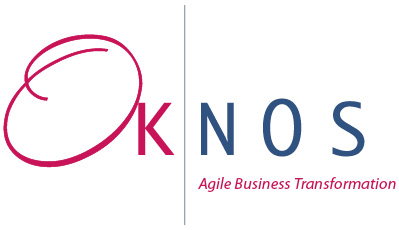How should businesses transform?
Digital Transformation is a trend word that will continue to accompany us in 2018. A topic that affects us all and everyone has their own opinion on the subject. The more I talk to other people about digital transformation, the clearer it becomes that there are a large spectrum of perspectives. And it turns out that Digital Transformation is the root for the fact that companies and businesses need to transform. With this article I present my point of view on the subject how businesses should transform.
Digital Transformation According to Wikipedia
I’ll start with the definition according to Wikipedia: “Digital Transformation” is a continuous change process in digital technology that affects the whole of society, and in particular companies.” This definition does not sound all that bad, digital transformation is about change throughout digital technologies. Digital technologies in themselves are not new and depending on where you start the border, it has been around as early as the middle of the 20th century. In my opinion, this is more than just “simple” digital technologies, it makes me wonder, to which combinations do the digital trends develop and how do they accompany our lives?
Digital Technologies as brilliant Technologies
Brynjolfsson and McAfee describe it as “brilliant technologies” for brilliant or rather ingenious technologies (The Second Machine Age: Work, Progress, and Prosperity in a Time of Brilliant Technologies). It is these ingenious technologies that are built from the digital technologies that make the difference. It involves technologies such as artificial intelligence, Big Data, IoT, Blockchain, Mobile Devices, and Robotics. These are just a few of the technologies that drive digital transformation but not only technologies are the drivers.
Disruptive Business Models
People are increasingly talking about the disruption of business models. Existing business models are disturbed or even destroyed more and more frequently. Examples include Uber or Airbnb; both companies have severally disrupted both the taxi and hotel industries through the use of platforms. And although neither Uber owns a single taxi, nor does Airbnb actually own a single hotel room physically, both have managed to destroy these industries solely by the combination of supply and demand via digital platforms. Disruptions of business models have always existed but the difference is the speed at which change is happening today, and it has become rapid. Almost everyone has access to all kind of information in the shortest possible time through the internet and social media. The amount of data available is huge and information itself is no longer a competitive advantage.
The speed with which new products are developed is also increasing. New techniques, such as Design Thinking, help to develop solutions that are customer-oriented in the shortest possible amount of time. When marketing products and services, the target audience is addressed directly. Marketing budgets are no longer distributed via mass medias such as radio or television in the “untargeted subsides”, but the target group is directly addressed and integrated via social media channels.
Transforming the organization
Another visible change is taking place not only in the technologies but also in the organizations themselves. Slow and sluggish organizations are increasingly struggling with the speeds that are necessary to survive as an organization. And the challenge lies not only in the technological changes, but also in those caused by outside threats. Different market players with ever more innovative ideas are pushing new communication channels onto the market and increasing the pressure on existing companies enormously. Reaction speeds, willingness to change, innovation are topics that are in demand by modern companies more than ever. Agility and self-organization in the organizations are the possible answers to these changes.
Agile organizations and project-oriented working methods characterize the new working worlds. To make matters worse, there is a change in the workforce, which occurs due to the expiring from the work process professionals, the baby boomer generation. Subsequent generation Y and Z entering the work process have very different ideas about what their work environment should be in terms of the job, career, mobility and work-life balance. A challenge in which many companies are insufficiently prepared.
Lean Start up and agile project management
The speed in with which changes occur also necessitates a different access to projects and project management. Detailed concepts and analyzes with long term project plans often no longer make sense in a more complex environment and are already obsolete after their creation. Methods such as Lean Startup helps create measure and learn from planning and minimizing the risk of failure. Agile approaches such as Scrum or Kanban are better suited to dealing with the dynamic of change.
Summary
Societies and companies have always undergone change and have been forced to adapt in order to survive. However, today’s changes, which are largely due to the introduction and use of completely new technologies, are increasing the pressure on organizations in unprecedented scale and form. It is not the ongoing improvement of products and service that is more central, but the way the company as a whole is adapting to changes and using them in their own interest. As a consequence it’s the business itself that needs to transform. We call this the Agile Business Transformation and define it as
“Transforming a business into an agile and flexible organization that is constantly developing capabilities to rapidly create innovate business models and products that are driven by customer values and enabled by the use of new, brilliant technologies.”
It is not easy to achieve this goal. However if companies do not start the transition, they run the risk of being overtaken by more disruptive players.






Leave A Comment